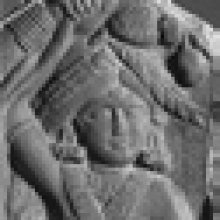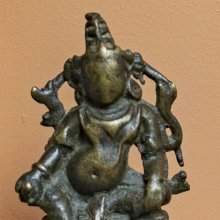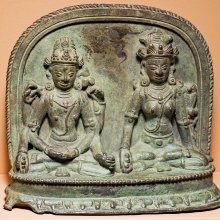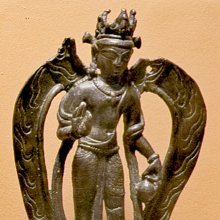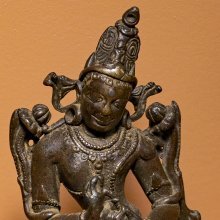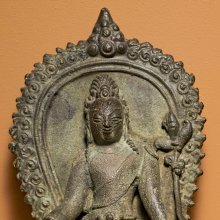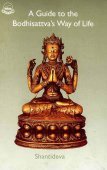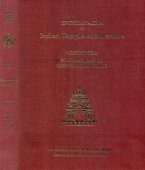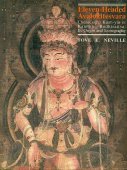Northern India: 2 definitions
Introduction:
Northern India means something in the history of ancient India. If you want to know the exact meaning, history, etymology or English translation of this term then check out the descriptions on this page. Add your comment or reference to a book if you want to contribute to this summary article.
Images (photo gallery)
(+11 more images available)
India history and geography
Source: archive.org: Cunningham’s Ancient Geography of IndiaNorthern India comprised the Panjab proper, including Kashmir and the adjoining hill states, with the whole of eastern Afghanistan beyond the Indus, and the present Cis-Satlej States to the west of the Saraswati river.
According to Xuanzang (Hwen Thsang), in Northern India, the districts of Kabul, Jalalabad, Peshawar, Ghazni, and Banu were all subject to the ruler of Kapisa, whose capital was most probably at Charikar, or Alexandria ad Caucasum.
Source: Ancient Buddhist Texts: Geography of Early BuddhismNorthern India or Uttarāpatha refers to a district of ancient India comprising the Punjab proper including Kashmīr and the adjoining hill states; as recorded in the Pāli Buddhist texts (detailing the geography of ancient India as it was known in to Early Buddhism).—According to Chinese Buddhist writers, Northern India (Uttarāpatha) comprised the Punjab proper including Kashmīr and the adjoining hill states with the whole of eastern Afganisthan beyond the Indus, and the present Cis-satlej States to the west of the Saraswatī river.

The history of India traces the identification of countries, villages, towns and other regions of India, as well as mythology, zoology, royal dynasties, rulers, tribes, local festivities and traditions and regional languages. Ancient India enjoyed religious freedom and encourages the path of Dharma, a concept common to Buddhism, Hinduism, and Jainism.
See also (Relevant definitions)
Partial matches: India.
Full-text (+130): Harshavardhana, Kashmira, Uttarapatha, Avimuktakshetra, Udicipatha, Stanottariya, Dilruba, Yaudheya, Shala, Tushara, Griddhrakuta, Aryavarta, Hintustani, Madhupura, Sindhu, Vindhyas, Samudragupta, Turushka, Caracuvatam, Kalindi.
Relevant text
Search found 91 books and stories containing Northern India; (plurals include: Northern Indias). You can also click to the full overview containing English textual excerpts. Below are direct links for the most relevant articles:
Impact of Vedic Culture on Society (by Kaushik Acharya)
Systems of Administration during the Early Period (Introduction) < [Chapter 5]
Geographical extent and History of Northern India < [Chapter 1]
Socio-cultural Scenario of Northern India in Early Mediaeval Period < [Chapter 4]
The Ancient Tamil Civilisation < [January-February 1931]
Religious Movements In Medieval India < [January-February, 1930]
Growth of Short Verse < [April – June, 2006]
Lakulisha-Pashupata (Philosophy and Practice) (by Geetika Kaw Kher)
Srikantha in the Saiva pantheon < [Chapter 1 - The Historical Context]
Pasupata History (Introduction) < [Chapter 1 - The Historical Context]
Early Evidences from Art, Archeology and History < [Chapter 1 - The Historical Context]
Harshacharita (socio-cultural Study) (by Mrs. Nandita Sarmah)
Part 9.5: Dress and Other Amenities of a Soldier < [Chapter 5 - Political Aspects]
Part 3: Position of Harṣacarita < [Chapter 1 - Introduction]
Part 2.2: Relation with Other Kings < [Chapter 5 - Political Aspects]
Kavyamimamsa of Rajasekhara (Study) (by Debabrata Barai)
Appendix 2 - Identification of Geographical names mentioned in the Kāvyamīmāṃsā
Part 8.7 - The region of Uttarāpatha (northern part) < [Chapter 5 - Analyasis and Interpretations of the Kāvyamīmāṃsā]
Kathasaritsagara (the Ocean of Story) (by Somadeva)
Related products
